Screening new wheat varieties for stem rust resistance
Michigan State University collaborates with USDA cereal pathologist to screen new winter wheat varieties for stem rust resistance in a trial located in Michigan’s Upper Peninsula.
In the spring of 2011, Michigan State University wheat breeder Janet Lewis received a call from Minnesota. Yue Jin, a research plant pathologist at the USDA Agricultural Research Service Cereal Disease Laboratory on the University of Minnesota campus, was looking for a Michigan location to include in his winter wheat stem rust screening program. The location needed to be distant from the main wheat growing areas of Michigan and also receive consistent, heavy, annual snow cover. The snow cover was desirable to give winter protection to less cold-hardy wheat varieties that may be included from southern states in the screening program.
Jin’s main wheat stem rust screening work takes place near his lab in St. Paul, Minn. The establishment of additional sites provides field screening options in case a large number of breeding lines from breeding programs across the United States need to be screened. The Michigan site will determine if a suitable remote site in Michigan can accommodate many different types of wheat varieties – southern wheat varieties in particular – and whether the location is suitable for stem rust development. Having the capacity in place to screen U.S. wheat lines from breeding programs across the United States is a valuable asset for the wheat breeding community.
The question was sent to MSU plant pathologist Willie Kirk, who then contacted me. I considered the options for a U.P. location, where winter is long and snow is plentiful. What better location than the Michigan State University Extension Upper Peninsula Research and Extension Center in Chatham, Mich.? The question was passed along to center manager Paul Naasz and U.P. forage Extension specialist Doo-Hong Min, who is also stationed at Chatham, Mich. Research technician Christian Kapp was brought into the discussion, and the final response from MSU was yes! A trial site for winter wheat stem rust screening could be established in 2011 at the MSU facility in Chatham, Mich.
The site was established in a beef pasture area that was cleared of trees, but had never been plowed since the establishment of the Upper Peninsula Research and Extension Center in 1899, and almost certainly not prior to that time. The location was selected to minimize stem rust contamination potential of winter wheat grown by MSU on the facility. The ground was cultivated, stones were picked and fencing was installed to keep grazing cattle out.
Five-hundred or so 5-foot, single row plots of wheat, including material from Michigan and several other states, were planted. Seed was received and planted in the last week of September – very late for the Upper Peninsula – but a mild, warm fall season allowed the plants to get a good start before winter set in. A border of five rows of an old winter wheat variety very susceptible to stem rust was planted around the perimeter of the plot area and inoculated with a common stem rust pathogen the following spring. The single row plots were exposed to the disease as it developed in the border. Virtually all commercial varieties of winter wheat have genetic resistance to the particular stem rust race used as inoculum, so an outbreak of wheat stem rust originating from the screening nursery was not a concern.
On July 11, 2012, Jin visited Chatham, Mich., to evaluate the results of this effort. He was pleased with the success of the disease establishment in the plots, and especially pleased with the performance of the wheat lines from around the eastern United States. He spent a few hours evaluating the plot; in-depth data collection was not needed since these same lines are all in the main trial location in Minnesota.
Jin’s assessment of the trial plot at Chatham, Mich., was favorable. The wheat plots were disked into the soil following Jin’s visit. However, being an atypical year due to low snow cover, additional tests are necessary to determine the suitability of the site. The project was continued for the 2012-2013 winter season. Plots are in-ground currently.
Stem rust of wheat is only one of many potential wheat disease problems in Michigan. For a good overview of wheat disease identification, check out the “Wheat Disease Identification” publication developed by the USDA National Institute of Food and Agriculture Pest Management program.
A photographic record of the winter wheat stem rust screening plot trial at Chatham, Mich., 2011-2012
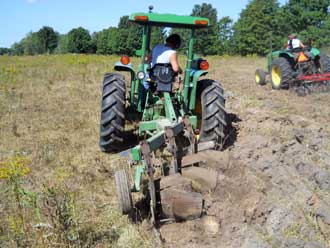 |
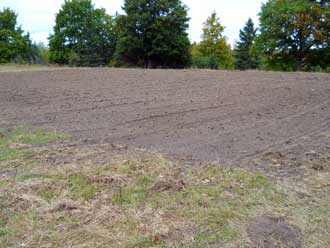 |
Site prep, Aug. 30, 2011 |
Site ready for planting, Sept. 22, 2011 |
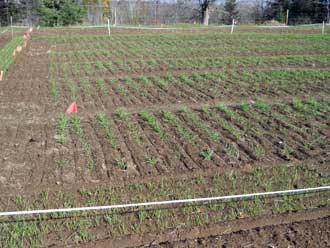 |
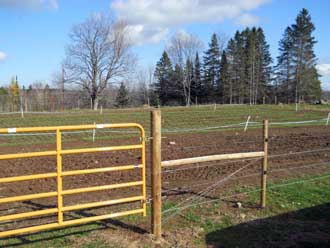 |
Small plants, Oct. 29, 2011 |
Fencing in place, Oct. 29, 2011 |
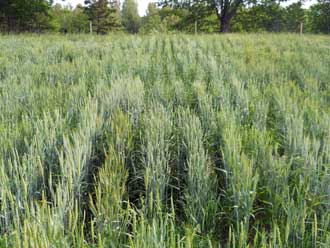 |
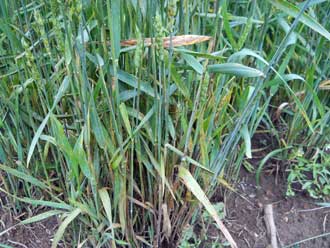 |
One row, 5-ft long plots, June 11, 2012 |
Border plant infected with stem rust, June 22, 2012 |
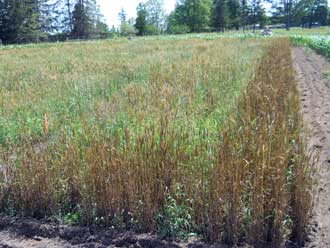 |
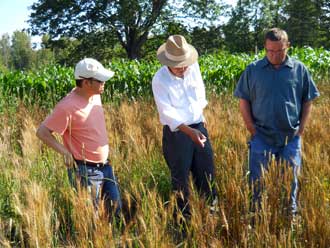 |
Infected plot border, July 6, 2012 |
Doo-Hong Min, Yue Jin and Christian Kapp inspect plots, July 11, 2012 |
For more information on the wheat stem rust screening nursery at Chatham, Mich., contact MSU Extension U.P. crop production educator Jim Isleib at 906-387-2530.



 Print
Print Email
Email

